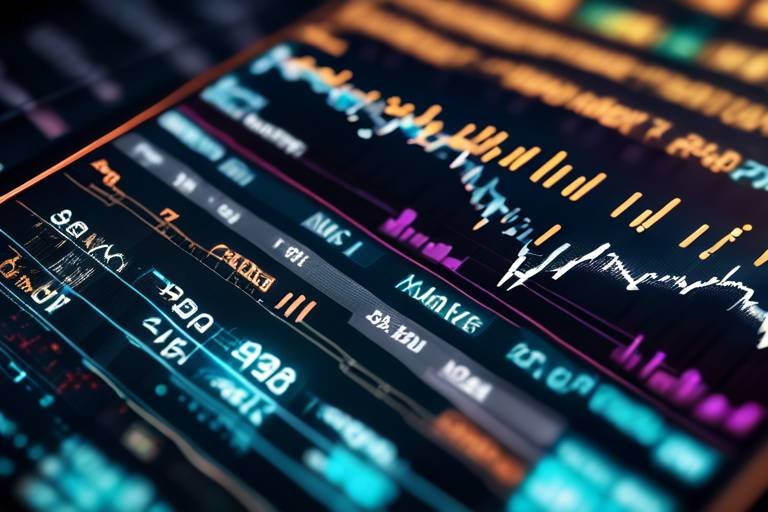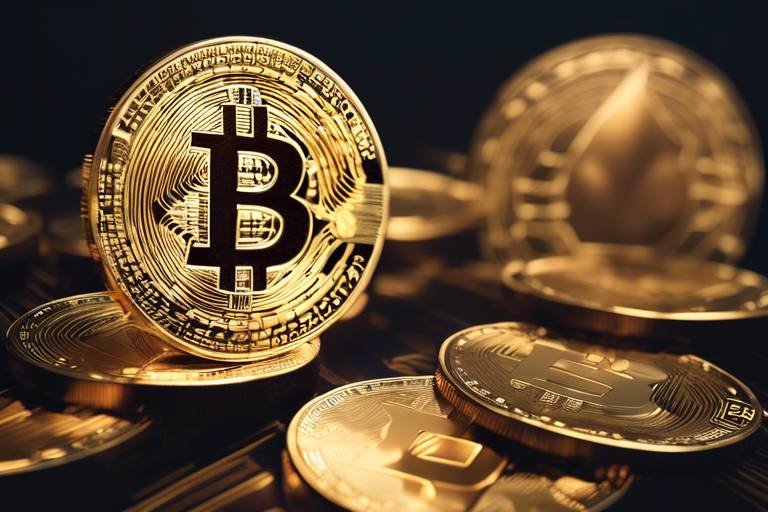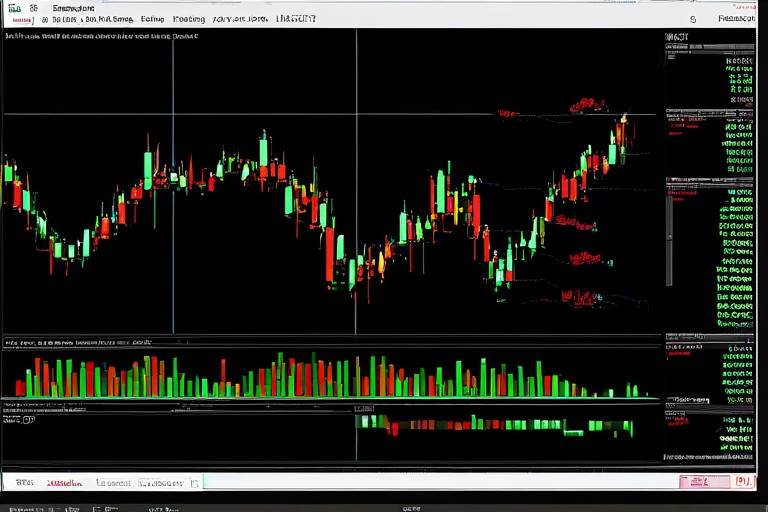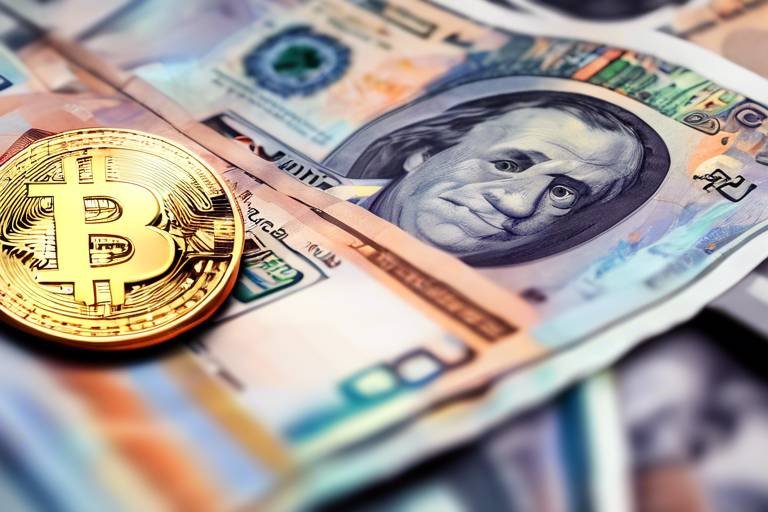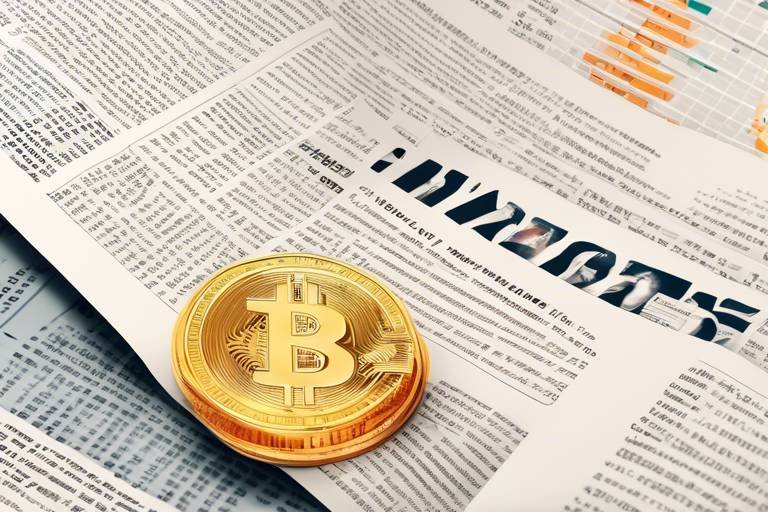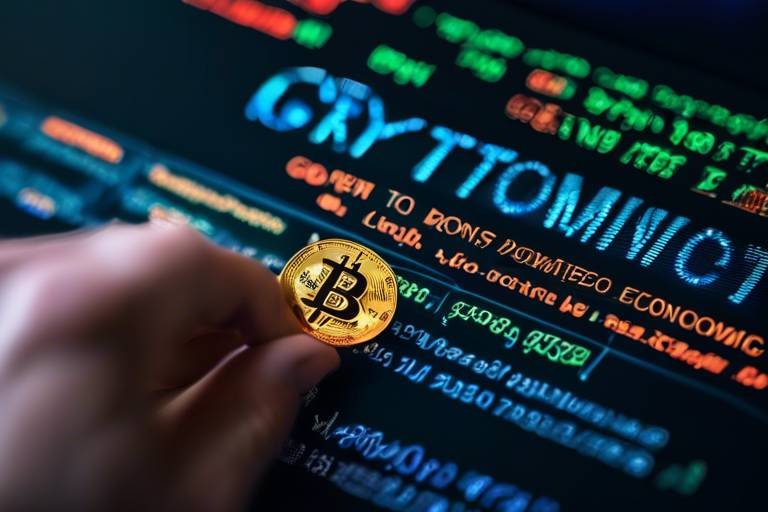Evaluating the Future of Tokenized Assets in Crypto Markets
The world of finance is undergoing a seismic shift, and at the heart of this transformation lies tokenized assets. Imagine a future where you can own a fraction of a high-end property, a piece of art, or even shares in a startup, all represented digitally on a blockchain. This is not just a dream; it’s becoming a reality. Tokenization is revolutionizing how we think about ownership, investment, and liquidity, and its implications are vast and profound.
Tokenized assets are digital representations of real-world assets, ranging from real estate to stocks, and even collectibles. By using blockchain technology, these assets can be divided into smaller parts, allowing for greater accessibility and democratization of investment opportunities. But what does this mean for traditional finance and the average investor? Let’s dive into the emerging landscape of tokenized assets, exploring both the exciting opportunities and the challenges that lie ahead.
Tokenization has gained momentum in recent years, driven by a variety of factors that highlight its transformative potential. The advent of blockchain technology has made it possible to represent assets digitally, offering a level of security and transparency that was previously unattainable. But what exactly is fueling this trend? One major factor is the increasing demand for liquidity in markets that have historically been illiquid. Investors are looking for ways to access their funds quickly, and tokenization provides a solution.
Moreover, the global pandemic has accelerated the shift towards digital solutions in finance. As more people turn to online platforms for trading and investing, the need for innovative solutions like tokenized assets has become more apparent. Industries such as real estate, art, and even sports are beginning to embrace this new paradigm, recognizing that tokenization can unlock value and create new revenue streams.
So, what exactly are the benefits of tokenized assets? The advantages are numerous, and they can significantly transform investment opportunities for both individuals and institutions. Let's break down some of the key benefits:
One of the most significant advantages of tokenized assets is their ability to improve liquidity in traditionally illiquid markets. Think about real estate: buying a property often requires a substantial upfront investment and can take months to sell. With tokenization, properties can be divided into smaller, tradable units, allowing investors to buy and sell fractions of an asset with ease. This not only enhances liquidity but also democratizes access to investment opportunities for a broader audience.
Fractional ownership is another game-changing aspect of tokenized assets. Imagine being able to own a piece of a luxury yacht or a famous painting without needing to purchase the entire asset. Tokenization makes this possible, allowing investors to own a portion of high-value assets. This concept not only lowers the barrier to entry for individual investors but also enables them to diversify their portfolios in ways that were previously unimaginable.
In an era where trust is paramount, the use of blockchain technology in tokenization enhances transparency and security. Every transaction is recorded on a public ledger, making it nearly impossible to alter or manipulate the data. This feature can build trust among investors and significantly reduce the risk of fraud. When you invest in a tokenized asset, you can rest assured that your ownership is secure and verifiable.
Despite its potential, tokenization faces several challenges that need to be addressed for it to reach its full potential. Regulatory hurdles, technological limitations, and market acceptance are just a few of the obstacles that could impact the future of tokenized assets. Understanding these challenges is crucial for investors and companies looking to navigate this evolving landscape.
Regulatory frameworks play a crucial role in the adoption of tokenized assets. The current regulatory landscape is fragmented, with different countries adopting various approaches to tokenization. This inconsistency can create confusion and hinder the growth of the market. As tokenized assets gain traction, we can expect to see more comprehensive regulations emerge, which could either facilitate or impede their adoption.
Different countries are adopting various regulatory approaches to tokenization, leading to a patchwork of laws that can be challenging to navigate. For instance, while some jurisdictions are embracing tokenization and creating friendly regulations, others remain skeptical, imposing stringent rules that could stifle innovation. Understanding these global differences is essential for investors and companies looking to operate in this space.
Compliance with existing laws is essential for the success of tokenized assets. Companies in the tokenization space face numerous legal challenges, from ensuring that their offerings comply with securities regulations to navigating tax implications. Addressing these issues will be vital for building a sustainable market for tokenized assets.
As the crypto market evolves, the future of tokenized assets looks promising. With continued advancements in technology and a growing acceptance of digital assets, we can expect to see more innovative solutions emerge. Trends such as the integration of artificial intelligence in trading tokenized assets and the development of decentralized finance (DeFi) platforms will likely shape the landscape in the coming years.
In conclusion, tokenized assets are not just a passing trend; they represent a fundamental shift in how we think about ownership and investment. As we move forward, it will be fascinating to see how this evolution unfolds and what new opportunities it will create for investors around the globe.
- What are tokenized assets? Tokenized assets are digital representations of real-world assets, allowing for fractional ownership and improved liquidity.
- How do tokenized assets enhance liquidity? By dividing high-value assets into smaller, tradable units, tokenization allows for easier buying and selling, improving market liquidity.
- What challenges do tokenized assets face? Regulatory hurdles, technological limitations, and market acceptance are some of the primary challenges that tokenized assets must overcome.
- How does blockchain technology contribute to tokenization? Blockchain provides a secure and transparent way to record transactions, enhancing trust and reducing the risk of fraud.

The Rise of Tokenization
Tokenization is not just a buzzword in the financial world; it's a revolutionary concept that's reshaping how we think about assets. Over the past few years, we've witnessed an explosion in the adoption of tokenization, driven by advancements in technology and a growing demand for more efficient ways to manage assets. But what exactly is tokenization? In simple terms, it refers to the process of converting physical or digital assets into a digital token on a blockchain. This transformation allows for a more streamlined and transparent method of ownership transfer and asset management.
Several factors are propelling this trend forward. First and foremost, the rise of blockchain technology has provided a secure and decentralized platform for tokenized assets. Unlike traditional systems that rely on intermediaries, blockchain allows for direct peer-to-peer transactions, reducing costs and increasing efficiency. Imagine being able to buy a fraction of a luxury property or a rare art piece without needing a hefty sum of money upfront. Tokenization makes this possible, allowing individuals to invest in high-value assets that were previously out of reach.
Moreover, the demand for liquidity in markets that have traditionally been illiquid is driving the tokenization trend. For instance, real estate and fine art are notorious for their lack of liquidity. By tokenizing these assets, they can be divided into smaller, more affordable units, making it easier for a broader audience to participate in these markets. This democratization of investment opportunities is akin to opening the floodgates of a previously gated community, allowing more people to enter and benefit from the wealth-generating potential of these assets.
Additionally, the global economic landscape is changing. With the rise of digital currencies and the increasing acceptance of crypto assets, investors are seeking new ways to diversify their portfolios. Tokenized assets fit perfectly into this evolving paradigm, providing a seamless bridge between traditional finance and the burgeoning world of cryptocurrencies. As we move forward, we can expect to see tokenization become a critical component of the financial ecosystem, influencing how we invest, trade, and manage assets.
However, the rise of tokenization is not without its challenges. While the technology promises increased efficiency and accessibility, there are still significant hurdles to overcome. Issues such as regulatory compliance, technological limitations, and market education remain pertinent. As the industry matures, addressing these challenges will be essential to unlocking the full potential of tokenized assets.
In summary, the rise of tokenization is a multifaceted phenomenon driven by technological advancements and changing market dynamics. As we embrace this new era, it's crucial to understand both the opportunities and challenges that come with it. The future of finance may very well be tokenized, and those who adapt to this change will likely reap the rewards.

Benefits of Tokenized Assets
Tokenized assets are revolutionizing the investment landscape, and the benefits they offer are nothing short of transformative. Imagine a world where you can own a fraction of a high-value asset, like a luxury yacht or a piece of real estate, without needing millions in the bank. This is the power of tokenization! By converting physical and digital assets into tokens on a blockchain, we unlock a plethora of advantages that were previously unimaginable. So, what exactly are these benefits?
First and foremost, liquidity is a game-changer. Traditional markets often suffer from illiquidity, making it difficult for investors to buy or sell assets quickly. Tokenized assets, however, can be traded 24/7 on various platforms, providing a level of liquidity that traditional assets simply can't match. This means that investors can quickly convert their assets into cash, providing a safety net that encourages more people to invest.
Moreover, the concept of fractional ownership is another significant advantage. With tokenization, you can invest in high-value assets without needing to purchase the entire asset. For instance, if a piece of art is valued at $1 million, tokenization allows you to buy a fraction of it for just a few hundred dollars. This democratization of investment opportunities means that more individuals can participate in markets that were once the exclusive domain of the wealthy.
Additionally, tokenized assets enhance transparency and security through the use of blockchain technology. Every transaction made with tokenized assets is recorded on a public ledger, making it nearly impossible to manipulate or commit fraud. This level of transparency builds trust among investors, as they can verify the authenticity and ownership of assets without relying on a third party. In a world where scams and fraud are rampant, this is a significant reassurance for investors.
To summarize, the benefits of tokenized assets can be encapsulated as follows:
- Increased Liquidity: Enables faster transactions and easier access to cash.
- Fractional Ownership: Allows investors to own portions of high-value assets.
- Enhanced Transparency: Provides a clear record of ownership and transactions.
- Improved Security: Reduces the risk of fraud through blockchain technology.
As we continue to explore the potential of tokenized assets, it's clear that they not only offer new investment avenues but also promote a more inclusive financial ecosystem. The traditional barriers to entry are being dismantled, allowing a diverse range of investors to participate in markets that were once out of reach. The future looks bright for tokenized assets, and as we delve deeper into their implications, it’s exciting to consider how they will reshape the financial landscape.
Q1: What are tokenized assets?
A1: Tokenized assets are digital representations of physical or digital assets that exist on a blockchain, allowing them to be easily traded and owned in fractions.
Q2: How does tokenization improve liquidity?
A2: Tokenization allows assets to be traded on various platforms 24/7, making it easier for investors to buy and sell, thus improving liquidity.
Q3: What is fractional ownership?
A3: Fractional ownership enables multiple investors to own a portion of a high-value asset, making it accessible to those who may not have the capital to purchase it outright.
Q4: How does blockchain enhance security?
A4: Blockchain technology records every transaction on a public ledger, making it nearly impossible to alter or commit fraud, thereby enhancing the security of tokenized assets.

Liquidity and Accessibility
Imagine a world where you can invest in assets that were once out of reach, like a luxury yacht or a piece of fine art, with just a few clicks. Tokenized assets are making this dream a reality by enhancing liquidity and accessibility in financial markets. Traditionally, many investment opportunities have been locked behind high barriers, such as hefty minimum investments and complex ownership structures. However, the advent of tokenization is breaking down these walls, allowing a broader audience to participate in investment opportunities that were previously reserved for the elite.
One of the most exciting aspects of tokenized assets is their ability to transform illiquid markets. In the past, if you wanted to invest in real estate, for instance, you would need significant capital to purchase a property outright. But with tokenization, a property can be divided into numerous digital tokens, each representing a share of ownership. This means that instead of needing to cough up hundreds of thousands of dollars, you can invest a fraction of that amount. The result? Improved liquidity in markets that have traditionally been stagnant.
Furthermore, tokenization democratizes access to investment opportunities. With the help of blockchain technology, anyone with an internet connection can buy, sell, or trade these digital tokens. This increased accessibility opens up a world of possibilities for everyday investors. For instance, consider the following benefits:
- Lower Entry Barriers: Investors can purchase fractions of high-value assets, making it easier for more people to participate.
- Global Reach: Tokenized assets can be traded across borders, allowing investors from different countries to access a wider range of opportunities.
- 24/7 Trading: Unlike traditional markets that operate on fixed hours, tokenized assets can be traded anytime, anywhere, providing greater flexibility.
In addition to these advantages, the liquidity provided by tokenized assets can lead to more efficient price discovery. When more investors can buy and sell assets easily, it creates a more dynamic market where prices reflect real-time demand. This is a stark contrast to traditional markets, where illiquidity can lead to significant price discrepancies. The ability to quickly convert assets into cash provides peace of mind for investors, knowing they can access their funds when needed.
However, it’s essential to recognize that while tokenization enhances liquidity and accessibility, it also requires a robust technological infrastructure and regulatory frameworks to ensure safety and compliance. As the industry evolves, we can expect to see innovations that further enhance these aspects, making the world of investing more inclusive than ever before.

Fractional Ownership
Imagine being able to own a slice of a luxury yacht or a piece of a famous painting without needing to fork over millions of dollars. is revolutionizing the way we think about investing in high-value assets, and tokenization is at the heart of this transformation. By breaking down assets into smaller, more affordable units, tokenization allows a broader range of investors to participate in markets that were once exclusive to the wealthy elite. This shift is not just a trend; it's a fundamental change in the investment landscape.
So, how does fractional ownership work in the context of tokenized assets? The concept is simple yet powerful. Through blockchain technology, assets can be divided into smaller portions, or tokens, each representing a share of ownership. For example, let’s say a piece of real estate valued at $1 million is tokenized into 1,000 tokens. Each token, now worth $1,000, can be purchased by different investors. This democratizes access to investment opportunities, allowing individuals to invest in assets they might not have been able to afford otherwise.
Consider the following benefits of fractional ownership facilitated by tokenization:
- Accessibility: Investors can enter the market with lower capital, making it easier for people from various financial backgrounds to diversify their portfolios.
- Liquidity: Tokenized assets can be traded on secondary markets, allowing investors to buy and sell their fractions with greater ease compared to traditional ownership.
- Diversification: Investors can spread their investments across multiple assets, reducing risk and enhancing potential returns.
Furthermore, this model opens the door for innovative investment strategies. For instance, investors can now team up to purchase high-value collectibles or real estate properties, pooling their resources while still retaining a stake in the asset. This collaborative approach not only fosters a sense of community among investors but also enhances the overall investment experience.
However, it's essential to keep in mind that fractional ownership, while promising, also comes with its own set of challenges. Issues such as governance, management of the underlying asset, and the need for robust legal frameworks must be addressed to ensure a smooth operation. Investors should be aware of these factors and conduct thorough due diligence before jumping into fractional ownership opportunities.
In conclusion, fractional ownership through tokenization is reshaping the investment landscape, making it more inclusive and accessible. As technology continues to evolve, we can expect to see even more innovative solutions that harness the power of tokenization, allowing individuals to invest in high-value assets like never before.
What is fractional ownership?
Fractional ownership allows multiple investors to own a percentage of a high-value asset, making it more accessible to a broader audience.
How does tokenization facilitate fractional ownership?
Tokenization divides an asset into smaller digital tokens, each representing a share of ownership, which can be easily bought and sold.
What are the benefits of fractional ownership?
Benefits include increased accessibility, liquidity, and diversification of investments.
Are there risks involved with fractional ownership?
Yes, challenges such as governance, asset management, and legal compliance must be considered before investing.

Transparency and Security
In the world of finance, trust is paramount. When it comes to investments, the fear of fraud and mismanagement can keep potential investors at bay. However, tokenized assets are changing the game by leveraging blockchain technology to enhance both transparency and security. Imagine a world where every transaction is recorded in a way that is immutable and accessible to all. This is not just a dream; it's the reality that tokenization brings to the table.
Blockchain operates as a decentralized ledger, meaning that every transaction involving a tokenized asset is documented and verified by a network of computers rather than a single entity. This decentralized nature significantly reduces the risk of manipulation. For instance, if you invest in a tokenized real estate property, you can independently verify ownership and transaction history without relying on a third party. This level of transparency not only builds investor confidence but also acts as a deterrent to fraudulent activities.
Moreover, the security features inherent in blockchain technology ensure that once a transaction is recorded, it cannot be altered or deleted. This is akin to having a digital vault where every asset's history is safely stored and protected from tampering. The cryptographic techniques used in blockchain create a secure environment that is far less susceptible to hacking compared to traditional financial systems. As a result, investors can feel more secure knowing that their assets are safeguarded against potential threats.
To further illustrate the benefits of transparency and security in tokenized assets, consider the following key points:
- Real-time auditing: With blockchain, audits can be performed in real-time, providing continuous assurance of asset integrity.
- Decentralized verification: Transactions are verified by multiple parties, reducing reliance on any single entity.
- Immutable records: Once a transaction is recorded, it is permanent and cannot be altered, ensuring a trustworthy history.
In conclusion, the transparency and security offered by tokenized assets through blockchain technology not only enhance investor confidence but also pave the way for a more trustworthy financial ecosystem. As we continue to explore the future of tokenization, the importance of these features cannot be overstated. They represent a significant shift in how we perceive and engage with investments, ultimately leading to a more democratized and secure financial landscape.
Here are some common questions regarding transparency and security in tokenized assets:
- How does blockchain ensure transparency? Blockchain records every transaction in a public ledger, allowing anyone to verify the history of an asset.
- What makes tokenized assets more secure than traditional assets? Tokenized assets utilize cryptographic techniques and decentralized verification, making them less vulnerable to fraud and hacking.
- Can I trust the information on a blockchain? Yes, because of its immutable nature, once information is recorded on a blockchain, it cannot be changed or deleted.

Challenges in Tokenization
While the concept of tokenization is incredibly exciting and holds immense potential for transforming the financial landscape, it is not without its challenges. One of the most significant hurdles is the regulatory environment. Different countries have varying laws and regulations regarding digital assets, which creates a patchwork of compliance requirements that can be daunting for businesses looking to enter the market. For instance, while some nations embrace cryptocurrency and tokenized assets, others impose strict limitations or outright bans, leading to uncertainty and confusion.
Moreover, the technological limitations associated with blockchain technology can also pose challenges. Not every blockchain can support the complex functionalities required for tokenization. Scalability issues, transaction speed, and energy consumption are just a few of the technical barriers that need to be addressed. As the demand for tokenized assets grows, these technological constraints could hinder widespread adoption unless innovative solutions are developed.
Another critical aspect to consider is the security risks involved in tokenization. While blockchain technology is generally considered secure, it is not immune to hacks and fraud. High-profile breaches have occurred, leading to significant financial losses and eroding trust in digital assets. Investors are understandably cautious, and until robust security measures are universally adopted, skepticism may linger. This is particularly concerning given that tokenized assets often represent real-world value, and any breach could have devastating consequences.
Furthermore, the lack of standardization in the tokenization process itself can create confusion in the market. Different platforms may use varying protocols and frameworks for tokenizing assets, making it difficult for investors to understand what they are purchasing. This inconsistency can lead to misunderstandings and potentially fraudulent activities. For tokenized assets to gain mainstream acceptance, the industry must work towards establishing clear standards and best practices.
Finally, the educational gap regarding tokenized assets remains a significant challenge. Many potential investors and institutions are still unfamiliar with how tokenization works, its benefits, and its risks. This lack of understanding can lead to hesitance in adopting tokenized solutions, limiting the market's growth. To bridge this gap, comprehensive educational initiatives and resources are essential to inform stakeholders about the opportunities and intricacies of tokenized assets.
In summary, while the future of tokenization is bright, it is essential to acknowledge and address these challenges. By navigating the regulatory landscape, enhancing technology, ensuring security, standardizing processes, and educating the market, the potential of tokenized assets can be fully realized.
- What are tokenized assets?
Tokenized assets are digital representations of real-world assets, such as real estate or stocks, created using blockchain technology. - How do tokenized assets improve liquidity?
Tokenization allows assets to be divided into smaller units, making it easier for investors to buy and sell portions of high-value assets. - What are the main challenges of tokenization?
Challenges include regulatory hurdles, technological limitations, security risks, lack of standardization, and educational gaps. - Are tokenized assets secure?
While blockchain technology offers enhanced security, it is not entirely immune to hacks, making security measures crucial. - How can I invest in tokenized assets?
Investing in tokenized assets typically involves using platforms that specialize in tokenization, ensuring compliance with local regulations.

Regulatory Considerations
When diving into the world of tokenized assets, one cannot overlook the critical role of regulatory frameworks. These frameworks are not just bureaucratic hurdles; they are the backbone that can either support or stifle the growth of this innovative financial landscape. The regulatory environment surrounding tokenization is still in its infancy, and as such, it presents a double-edged sword. On one side, clear regulations can foster trust and legitimacy, encouraging more players to enter the market. On the flip side, overly stringent regulations could hinder innovation and limit the accessibility of these assets to a broader audience.
The current regulatory landscape varies significantly from one jurisdiction to another. For instance, countries like the United States are grappling with how to classify tokenized assets. Are they securities? Commodities? Or something entirely new? This ambiguity creates a complex web of compliance challenges for businesses looking to tokenize their assets. In contrast, nations such as Switzerland have embraced a more progressive approach, developing clear guidelines that encourage innovation while maintaining investor protection.
Moreover, the rapid pace of technological advancements in the crypto space often outstrips the ability of regulators to keep up. This gap can lead to a lack of clarity, making it difficult for companies to navigate the legal landscape. As a result, many organizations are left in a state of uncertainty, which can stifle investment and innovation. To address these challenges, a collaborative approach between regulators and industry stakeholders is essential. By working together, they can develop frameworks that not only protect investors but also promote the growth of tokenized assets.
In addition to regulatory clarity, compliance with existing laws is paramount for the success of tokenized assets. Companies venturing into this space must be aware of various legal challenges, including issues related to anti-money laundering (AML) and know your customer (KYC) regulations. Failure to comply can result in hefty fines and damage to reputation. Therefore, understanding the legal landscape is crucial for businesses aiming to thrive in the tokenization market.
To summarize, the regulatory considerations surrounding tokenized assets are multifaceted and constantly evolving. Companies must remain vigilant and adaptable to navigate this complex environment. As the landscape matures, we can expect to see more harmonized regulations that will facilitate the growth of tokenized assets while ensuring investor protection. The future of tokenization hinges on the delicate balance between fostering innovation and maintaining regulatory oversight.
- What are tokenized assets? Tokenized assets are physical or digital assets that have been converted into a digital token on a blockchain, allowing for easier transfer and ownership tracking.
- Why are regulations important for tokenized assets? Regulations provide a framework that ensures transparency, security, and protection for investors, which can enhance trust in the market.
- How do different countries regulate tokenized assets? Regulatory approaches vary widely; some countries have established clear guidelines, while others are still determining how to classify and regulate these assets.
- What are the compliance challenges for companies? Companies face challenges such as navigating AML and KYC regulations, which can be complex and vary by jurisdiction.

Global Regulatory Approaches
The landscape of tokenization is as diverse as the countries that are exploring it. Each nation has its own set of regulations and frameworks that shape how tokenized assets are treated. This variability is crucial because it can either foster innovation or stifle growth, depending on the approach taken. For instance, countries like Switzerland have embraced a more progressive stance, creating a regulatory environment that encourages blockchain startups and tokenization projects. In contrast, places with stricter regulations may deter investment and technological advancement, creating a chasm between innovators and traditional financial institutions.
One of the key factors influencing these regulatory approaches is the perception of risk. Governments are concerned about issues such as fraud, money laundering, and investor protection. As a result, we see a spectrum of regulations ranging from outright bans to comprehensive frameworks that support tokenization while ensuring compliance. For example, the European Union is working on the Markets in Crypto-Assets (MiCA) regulation, which aims to create a unified regulatory framework across member states. This is a significant step towards harmonizing regulations and could serve as a model for other regions.
To better understand the global landscape of regulatory approaches, let’s take a look at a comparison table:
| Country/Region | Regulatory Approach | Key Features |
|---|---|---|
| Switzerland | Supportive | Clear guidelines for ICOs, tax incentives for blockchain projects. |
| United States | Varied | State-by-state regulations, SEC oversight, focus on investor protection. |
| European Union | Developing | MiCA regulation in progress, aims for unified approach across member states. |
| China | Restrictive | Ban on ICOs and cryptocurrency exchanges, focus on blockchain technology for state use. |
As we can see, the regulatory environment varies significantly across different regions. This disparity can lead to market fragmentation, where companies may choose to operate in jurisdictions with more favorable regulations. This not only affects local economies but also the global market dynamics as companies migrate to areas that support their growth.
Moreover, the challenge of compliance is not just about adhering to existing laws; it's also about anticipating future changes. Regulatory bodies are constantly evolving their frameworks in response to technological advancements and market demands. Companies involved in tokenization must remain agile, adapting to these changes to ensure they stay within legal boundaries while maximizing their potential for innovation.
In conclusion, understanding the global regulatory approaches to tokenization is essential for anyone looking to navigate this exciting yet complex landscape. As countries continue to refine their regulations, the balance between fostering innovation and ensuring safety will be crucial in shaping the future of tokenized assets.
- What are tokenized assets? Tokenized assets are digital representations of real-world assets on a blockchain, allowing for easier transfer and ownership.
- How does regulation impact tokenization? Regulation can either promote or hinder the growth of tokenized assets by establishing clear guidelines or imposing restrictive measures.
- Which countries are leading in tokenization regulations? Countries like Switzerland and regions like the European Union are considered leaders due to their supportive regulatory frameworks.
- What are the risks associated with tokenized assets? Risks include regulatory uncertainty, market volatility, and potential security issues related to blockchain technology.

Compliance and Legal Issues
In the rapidly evolving world of tokenized assets, are at the forefront of discussions among industry stakeholders. As tokenization blurs the lines between traditional assets and digital representations, the legal framework surrounding these innovations is becoming increasingly complex. One of the primary challenges is ensuring that tokenized assets comply with existing regulations, which can vary significantly from one jurisdiction to another. This inconsistency can create confusion and uncertainty for both issuers and investors.
To navigate these murky waters, companies involved in tokenization must invest considerable resources in understanding the legal landscape. This often means hiring legal experts who specialize in securities law, tax law, and international regulations. The goal is to ensure that their tokenized offerings do not inadvertently classify as securities, which would subject them to stringent regulatory requirements. For instance, the Howey Test in the United States is a critical benchmark that determines whether an asset is considered a security based on its characteristics.
Moreover, compliance extends beyond just initial offerings. Ongoing reporting and transparency requirements are essential to maintain investor trust and regulatory approval. Companies need to be prepared for audits and must implement robust know-your-customer (KYC) and anti-money laundering (AML) procedures. These measures not only protect the integrity of the tokenized asset but also help in creating a safer investment environment.
Here are some key compliance considerations that companies should keep in mind:
- Jurisdictional Variability: Different countries have different regulations regarding tokenized assets. Companies must be aware of the specific laws that apply in each jurisdiction they operate in.
- Investor Protections: Regulations often focus on protecting investors, which means that tokenized asset offerings must be transparent and provide adequate information to potential buyers.
- Data Privacy: With the implementation of regulations like the General Data Protection Regulation (GDPR) in Europe, companies must ensure that they handle personal data responsibly.
As the landscape of tokenized assets continues to mature, it is likely that we will see the development of more cohesive regulatory frameworks. This evolution could lead to a more standardized approach to compliance, which would benefit both issuers and investors. However, until such frameworks are established, companies must remain vigilant and proactive in addressing compliance and legal challenges.
In conclusion, the road to widespread adoption of tokenized assets is paved with legal complexities. By prioritizing compliance and understanding the regulatory landscape, companies can not only mitigate risks but also foster a more trustworthy and transparent market. The future of tokenized assets hinges on how well the industry can navigate these legal waters while continuing to innovate and provide value to investors.
- What are tokenized assets? Tokenized assets are digital representations of real-world assets created on a blockchain, allowing for easier transfer and ownership.
- Why is compliance important in tokenization? Compliance ensures that tokenized assets meet legal requirements, protecting both issuers and investors from potential legal issues.
- How do regulatory frameworks affect tokenized assets? Different regulatory frameworks can impact how tokenized assets are classified, traded, and managed, which in turn affects market dynamics.

The Future Outlook
The future of tokenized assets in the crypto market is not just a fleeting trend; it represents a seismic shift in how we perceive ownership and investment. As we navigate through this exciting landscape, it’s essential to understand the potential trajectories that tokenization could take. With advancements in technology and a growing acceptance of digital assets, we can anticipate several key developments that may reshape the financial market.
One of the most promising aspects of tokenized assets is their ability to integrate seamlessly with existing financial systems. Imagine a world where real estate, art, and even stocks can be traded on a blockchain platform, allowing for instantaneous transactions and unprecedented levels of liquidity. This integration could lead to a more efficient market, where assets are not only easier to buy and sell but also more accessible to a wider audience. With the rise of decentralized finance (DeFi), we are already witnessing the initial steps towards this reality, where traditional barriers are being dismantled.
Furthermore, as major financial institutions begin to embrace tokenization, we can expect to see a surge in institutional investment. This influx of capital could not only stabilize the market but also enhance the legitimacy of tokenized assets in the eyes of the public. The more mainstream acceptance we see, the more likely it is that regulatory bodies will create frameworks that support and protect this burgeoning sector. It's a bit like watching a snowball roll down a hill; as it gains momentum, it becomes increasingly difficult to stop.
However, with great potential comes significant challenges. The regulatory landscape is still murky, and companies involved in tokenization must navigate a complex web of compliance issues. As we look ahead, it’s crucial for industry players to engage with regulators and advocate for clear guidelines that foster innovation while ensuring consumer protection. The ongoing dialogue between the crypto community and regulatory bodies will play a pivotal role in shaping the future of tokenized assets.
Moreover, technological advancements will continue to drive the evolution of tokenization. We are already seeing innovations in blockchain technology, such as the development of more scalable and energy-efficient platforms. These improvements will not only enhance the user experience but also address some of the environmental concerns associated with crypto mining. As technology evolves, it could pave the way for new applications of tokenized assets that we haven’t even imagined yet.
In summary, the outlook for tokenized assets is bright, filled with opportunities and challenges alike. The convergence of technology, regulatory frameworks, and market acceptance will be critical in determining how this sector unfolds. As we stand on the brink of this new era, it’s essential for investors and stakeholders to stay informed and adaptable. After all, in the world of crypto, the only constant is change.
- What are tokenized assets? Tokenized assets are digital representations of real-world assets on a blockchain, allowing for easier trading, ownership, and transfer.
- How do tokenized assets improve liquidity? By enabling fractional ownership and simplifying the trading process, tokenized assets can attract a larger pool of investors, thereby increasing market liquidity.
- What challenges do tokenized assets face? Key challenges include regulatory hurdles, technological limitations, and the need for compliance with existing financial laws.
- What is the future of tokenized assets? The future looks promising, with potential growth driven by technological advancements, increased institutional investment, and clearer regulatory frameworks.
Frequently Asked Questions
- What are tokenized assets?
Tokenized assets are digital representations of physical or intangible assets on a blockchain. This means that assets like real estate, art, or even stocks can be divided into smaller parts, represented as tokens, making them easier to trade and invest in.
- How do tokenized assets improve liquidity?
Tokenized assets enhance liquidity by allowing assets to be traded 24/7 on various platforms. This opens up access to a larger pool of investors, enabling quicker buying and selling, which is particularly beneficial for traditionally illiquid markets.
- What is fractional ownership?
Fractional ownership refers to the ability to own a fraction of a high-value asset through tokenization. For example, instead of needing to buy an entire piece of art or real estate, investors can purchase a fraction of it, making investments more accessible and affordable.
- How does tokenization enhance transparency?
Tokenization utilizes blockchain technology, which provides a transparent and immutable ledger. This means that all transactions are recorded and can be easily verified, reducing the risk of fraud and increasing trust among investors.
- What are the regulatory challenges facing tokenized assets?
Tokenized assets face various regulatory hurdles, including compliance with securities laws, anti-money laundering (AML) regulations, and differing rules across countries. These challenges can slow down the adoption of tokenization in the financial markets.
- How do global regulatory approaches differ?
Countries are taking different stances on tokenized assets, with some embracing innovation and others imposing strict regulations. This disparity can create complexities for businesses operating in multiple jurisdictions and affect market dynamics.
- What is the future outlook for tokenized assets?
The future of tokenized assets looks bright, with increasing interest from both retail and institutional investors. As technology evolves and regulatory frameworks become clearer, we can expect to see more widespread adoption and innovative applications in various sectors.


